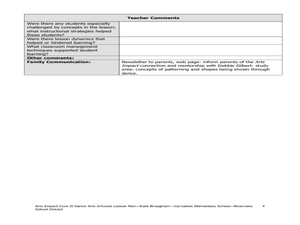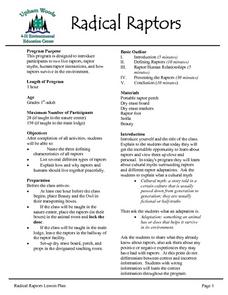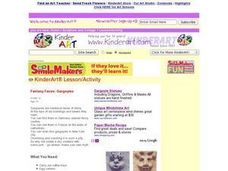Curated OER
Open and Closed Curves
In this open and closed curves worksheet, students label the pictures as having closed or open curves. Students complete 6 problems total.
Physics Classroom
The L.O.S.T. Art of Image Description - Curved Mirrors
We see curved mirrors every day in spoons, rear-view mirrors, stores as a safety measure, make-up mirrors, and in novelty stores. Scholars explore the changes to an image based on the curve of the mirror, the location of the image, and...
Curated OER
Geometry: curves
In this curves worksheet, students identify the curves in the shapes given as being either closed or open. Students complete 5 problems total.
Curated OER
Geometry
In this open and closed curves geometry activity, students distinguish between the 2 types of curves as they solve 6 problems
Curated OER
Geometry 2
In this geometry practice worksheet, learners practice their problem solving skills as they reveal whether 5 shapes have open or closed curves.
Balanced Assessment
On Averages and Curves
Determine the average on a curve. The class finds graphical representations of averages and expresses them both symbolically and on the graph. The assessment requires class members to justify using average to describe graphs.
Curated OER
Geometry: Closed or Open Curves
In this geometry worksheet, students look at a set of 6 shapes, then write whether the curves in the sets are closed or open curves.
EngageNY
Normal Distributions (part 2)
From z-scores to probability. Learners put together the concepts from the previous lessons to determine the probability of a given range of outcomes. They make predictions and interpret them in the context of the problem.
Balanced Assessment
Catenary
Develop a model for a hanging chain. Pupils find a mathematical model for a hanging chain and then they compare their models to the precise function that models the curve. Scholars come up with a strategy to determine how close their...
EngageNY
Exploring the Symmetry in Graphs of Quadratic Functions
Math is all about finding solutions and connections you didn't expect! Young mathematicians often first discover nonlinear patterns when graphing quadratic functions. The lesson begins with the vocabulary of a quadratic graph and uses...
EngageNY
The Definition of a Parabola
Put together the pieces and model a parabola. Learners work through several examples to develop an understanding of a parabola graphically and algebraically.
Curated OER
Math 155 - Fall 2005 Differentiation
For this differentiation worksheet, students find an equation of a line tangent to a curve. They use linear approximation to estimate answers. This two-page worksheet contains approximately 12 multi-step problems.
Curated OER
Dancing Polygons and Non-Polygons with Patterns
Second graders study movements. In this dance lesson, 2nd graders draw patterns selecting one to represent through movement with their body.
Curated OER
Applied Science - Science and Math Lab
Students investigate topology. In this Applied Science lesson plan students explore higher, more abstract mathematics using tangles. Students make topologically related shapes.
Curated OER
Determination of Phosphorus Content in River Water
Divide your chemistry or environmental science class into two groups. Each group tests water samples from a river for the concentration of phosphorus using a different method. With chemists, you can use this activity as they learn to use...
Curated OER
Stepper Motor
Students compare a stepper motor from a traditional motor. In this physics instructional activity, students summarize how it works. They build their own stepper motor and explore its uses.
Curated OER
Radical Raptors
Students are introduced to raptors and their role in the environment. They identify three characteristics of raptors and list several types of raptors found in nature. They discuss their positive and negative experiences with raptors and...
Curated OER
Adaptations of the Beak
Students examine the principles of adaptation using mouth structure of animals as an example. Students look specifically at the various shapes of beaks of birds and the bill of the platypus.
Curated OER
Star Gazers
Students research stars, constellations, planets and galaxies including names, shapes, sizes, colors, patterns and ages. They suspend the stars and planets from the ceiling and change monthy to display the various constellations. As a...
Curated OER
Throw to the Cone
Young scholars practice throwing to a moving target and increase their facility with accurate throwing by playing this game.
Curated OER
Fantasy Faces: Gargoyles
Students create gargoyles out of paper mache. Instructions for making paper mache pulp are included.
Curated OER
Identifying and Describing Polygons
Students identify the different properties of polygons. In this geometry instructional activity, students differentiate between polygons and non-polygons. They review important vocabulary to help them understand the properties of polygons.
Curated OER
How Do Airplanes Stay off the Ground?
Students use balloons and string to duplicate Bernoulli's Principle of wing shape and its affect on liftoff.
Curated OER
Polygons
Fourth graders identify and describe lines, shapes, and solids using formal geometric language. They use Inspiration to create a graphic organizer and outline of polygons.

























